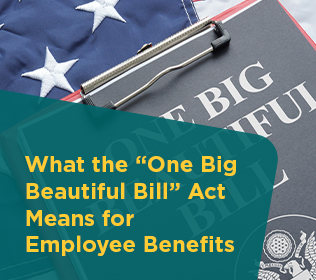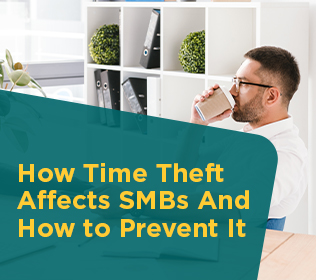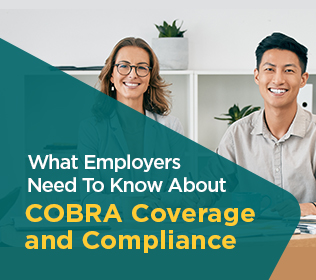
Open enrollment is an annual benefits event for business owners and their employees to review plan options and make elections. It is a period that demands strategic planning and thoughtful consideration from both employers and employees alike.
For employers, it goes beyond updating employee benefits selections. Open enrollment season presents an opportunity to assess benefits offerings and analyze contribution costs. The importance of this process can’t be understated. From evaluating a variety of medical, dental, and vision plans to determining their contribution to these plans and how much they’ll offset the cost of these options for their employees. The decisions business owners will have to make during this period will undoubtedly have a major impact on their organization and their employees.
For employees, it’s a chance to assess healthcare needs, evaluate the financial implications of those benefits plans, and have the chance to explore other benefits options they never considered before. Open enrollment is a time period that also encourages employees to consider addressing life events and potentially updating the coverage of their dependents.
So what is open enrollment? In this blog, you will learn more about what open enrollment is, specifically examining the significance it holds for small and medium-sized business owners and their employees.

What is Open Enrollment?
The first step to understanding open enrollment is defining the term. Open enrollment refers to the designated period in which employees can sign up for health insurance plans or make changes to their health coverage. Open enrollment is significant because employees can make these changes without needing to meet specific qualifying requirements. These requirements are known as qualifying life events.
What is a qualifying life event (QLE)?
Qualifying life events (QLEs) are defined by the US Office of Personnel Management (OPM) as “events deemed acceptable by the IRS that may allow participants to change their participation election for premium conversion outside of an open season.” Qualifying life events are things like loss of coverage, changes in household, like getting married, divorced, or the birth of a new child, changes in residence, and more.
QLEs help explain why open enrollment periods are so important. Without a QLE, employees are not permitted to make changes to their health insurance plans. Open enrollment allows employees to make an annual assessment of their healthcare needs, review available insurance options, and select a plan that best aligns with their needs for the upcoming year. As open enrollment only takes place at one specific time annually, the next question to answer is, “When is open enrollment?”
When is Open Enrollment?
Open enrollment occurs once per year, and the timing will vary from business to business. The process spans a few months, including the preparation and planning phase, followed by the employee selection phase.
As the season begins, SMB owners review benefits renewal costs presented by their broker and PEO. They will assess a variety of medical plan options, company contributions costs, and the cost to their employees. Business owners seek the assistance of their PEO partner and health insurance broker to ensure they’re making the best decisions from a financial and organizational standpoint.
Next, benefits administrators prepare for open enrollment to begin for benefits-eligible employees. As the process kicks off, benefits administrators must be available for inquiries, guidance, and support as employees navigate their health plan choices. In the next sections, you will learn how this process works and who is affected by it.

The Challenges Facing Small and Medium-Sized Businesses During Benefits Enrollment
Choosing employee benefits can be challenging for small and medium-sized businesses. Larger organizations have more employees and, therefore, more purchasing power. Conversely, smaller organizations have fewer employees and less purchasing power. Small and medium-sized companies often struggle to provide employee benefits equivalent to or better than those of their larger competitors. To attract and retain talented employees, it’s crucial for small businesses to offer competitive employee benefits. This is where the PEO model becomes a valuable resource for small and medium-sized businesses.
Open Enrollment Support for Small and Medium-Sized Businesses
Open enrollment can be difficult for small businesses. Fortunately, businesses don’t have to do it alone. One option for small businesses is to work with a PEO. PEO stands for Professional Employer Organization. A key benefit of partnering with a PEO is affordable employee benefits. PEOs have greater purchasing power than small companies, and they can pool their purchasing power with all the businesses partnering with the PEO. This allows PEOs to access great pricing for employee benefits and offer these prices to small businesses.
Many small and medium-sized businesses choose to partner with a health insurance broker. Health insurance brokers are experts when it comes to employee benefits. They assess the needs of small and medium-sized businesses to identify valuable yet affordable employee benefits options. Brokers cultivate relationships with insurance companies to negotiate better deals for their clients. Brokers also create strong bonds with their clients and become trusted advisors. Some health insurance or benefits brokers partner with a PEO, like PrestigePEO. This is an ideal scenario for SMBs. With the help of both a PEO and a trusted broker advisor, SMBs gain a powerful combination of expertise for strategic benefits planning and highly sought-after pricing optimization.
HR Tools For a Seamless Open Enrollment
Notably, PEOs are especially helpful during open enrollment season. PEOs provide support not only with advantageous employee benefits pricing but also with benefits administration support. Having administrative help for benefits enrollment is a huge advantage. For small businesses that do not have an in-house HR team, open enrollment questions often fall on employees who may not be familiar with employee benefits. With a PEO, SMBs gain the expertise and support of a benefits administrative team that is on hand to explain benefits plans, advise on the intricate differences, and answer any questions as they arise.
When evaluating a PEO partnership, one crucial element to consider is how employees will be supported. Some PEOs offer benefits support via a call center, which is not always the best experience for the client. Be sure to look for a PEO that prioritizes personalized one-on-one support. The ability to handle questions with a support team who is familiar with your organization is invaluable.
HR Assistance on Hand – The Value of HR Support During Open Enrollment
A PEO also offers helpful tools that transform the open enrollment experience. As open enrollment only happens once a year, it can be confusing for employees. Because these decisions will affect your health benefits for the upcoming year, it’s something that must be done correctly. To streamline this process, benefits enrollment tools are a great way to help employees feel more at ease. PEOs can offer tools like an open enrollment microsite, giving employees and managers alike a centralized hub that provides information like important dates, helpful instructions, and in-depth tutorial videos. Other important tools are things like webinar sessions to explain the benefits that are available, tutorial videos on how to submit benefits choices, and a benefits hotline for any urgent questions. However, not all PEOs give the same support to their clients. It’s important to choose a PEO with a high level of customer service.

How Employees Are Supported During Benefits Enrollment is Important
Open enrollment can be confusing for employees, and it’s key to provide in-depth assistance. Once a company has decided on benefits plans and pricing, it’s time to prepare for employees to go through the open enrollment election process. When an SMB is working with a PEO, employees will be notified by the PEO, and they will be on hand for questions and support. It’s important for employees to understand what the timeline looks like, as they will need to submit their elections before the deadline in order for their employee benefits to be processed in a timely manner. Therefore, one of the most significant communications with employees is to clearly convey the dates that everyone on the team needs to know.
Typically, open enrollment lasts about a month, though the timeline for specific companies may vary. The actual process of choosing benefits can be stressful for those who are not familiar with the options. Even if an employee has gone through many open enrollment periods throughout their career, it’s still a challenge to familiarize yourself with the plan options. That’s where support from a PEO is crucial.
PrestigePEO partners each client with a team of specialists, including a Benefits Specialist. This team will work with each organization to ensure that employees have the support they need to make smart decisions. If a company does not have an in-house HR department, the PrestigePEO Benefits Specialist will fill that role or support the existing HR representation the business has in-house.
Once open enrollment has officially launched, it’s time for employees to elect, change, or drop coverage for themselves and their dependants. Take a look at the type of employee benefits they can choose from.
Medical Plans and Voluntary Benefits Options For Your Employees
The first type of employee benefit is primary medical benefits, which refer to health insurance plans. It’s important to offer a variety of plans from leading insurance carriers. A variety of plan types allows employees to select a plan that best fits their specific needs, considering medical concerns, family size, and deductible amount. Below are some types of medical benefits that can be offered to employees.
- Primary medical benefits, including single plans and family plans
- Dental insurance
- Vision insurance
- Supplemental plans, life disability, accident, illness, and hospital insurance
Apart from primary medical plans, employees will have the option to select from a range of voluntary benefits. While these benefits are entirely optional, they can significantly enhance the value of an employee’s benefits package. Examples of voluntary benefits can include critical illness insurance, short-term and long-term disability, life insurance, and more. There are also more specific benefits that can be useful, like mental health counseling, gym memberships, legal counseling, and financial planning services. Below are some examples of voluntary benefits that businesses may offer to employees.
- Life insurance
- Financial wellness programs
- Discount programs
- Pet insurance
- Home and auto insurance
- Commuter benefits
- Identity and fraud protection
- Legal services
How Small and Medium Sized-Businesses Can Find Support During Open Enrollment
Annual open enrollment is significant for both employers and their team members. Since it only takes place once per year, thorough preparation and expert support are essential. Collaborating with a PEO adds value to your open enrollment experience. A PEO can provide competitive rates for employee benefits, assistance with questions or issues during open enrollment, and expert guidance beyond open enrollment season. If your company is looking for open enrollment support this year, contact PrestigePEO today.




